

Fun Pop Rock Experiments Exploring Viscosity
Krystal DeVille
July 2, 2023
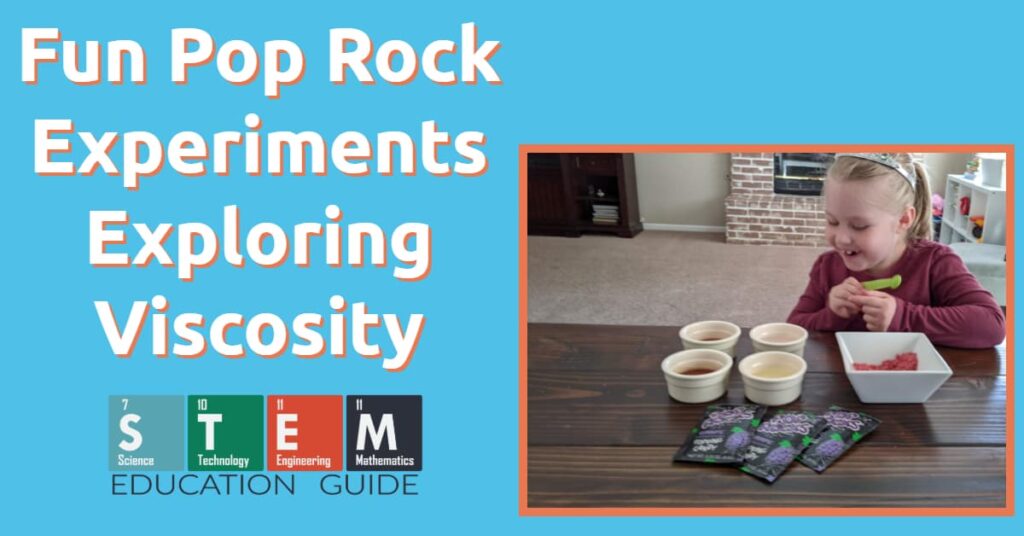
If you want to get your kids interested in science, soda and Pop Rocks make for a surprisingly good starting point.
Kids love Pop Rocks experiments because—let’s face it—kids love Pop Rocks. The second they know rock candy is involved, you will be able to pull their attention away from screens and get them engaged and excited about a STEM project.
Best of all, once you purchase the Pop Rocks you will more than likely have the rest of the materials you need on hand at home. Pop Rocks science experiments are an easy and inexpensive way to get kids interested in science while also having fun.
Table of Contents
What Are Pop Rocks Anyway?
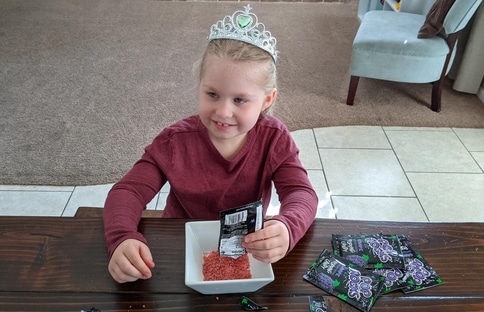
On the face of it, Pop Rocks are a relatively simple kind of candy, made of sugar, lactose, and artificial flavoring. What makes rock candy stand out among hard candies is the fact that pressurized carbon dioxide gas bubbles are present in the pieces and then create a popping sensation in your mouth as they are eaten.
Kids today know Pop Rocks as a fun and harmless treat; however, the kids who first enjoyed Pop Rocks in the 1970s and 1980s also had a healthy fear of the candy thanks to widespread rumors that Pop Rocks could be fatal when consumed with carbonated beverages.
Back then, manufacturer General Foods had to create a PR campaign for parents to convince them the candy was safe.
Because rumors were swirling around Pop Rocks and carbonated beverages, we ended up with a sort of sugary science experiment that has been a favorite of students for decades.
We will walk you through several ways to turn your home into a mini science lab using candy experiments, and we will help you with a quick lesson on viscosity first.
What is Viscosity?
When walking your kids through STEM projects it’s a good idea to brush up on the big words first. Naturally, you will impress them, but we also recognize that not every adult can rattle off a viscosity definition on command.
Viscosity relates to liquid and how it flows. When you think of something thick, that pours slowly (like honey), you would describe it as having a high viscosity. Water, on the other hand, has a low viscosity.
If you really want to drive the point home for your kids, put three liquids out and have them rank the viscosity, and then pour them into cups to see if they are right. (You could try cooking oil, syrup, and laundry detergent, for example).
Once your kids have a good grasp on viscosity, the next question is ready to be answered.
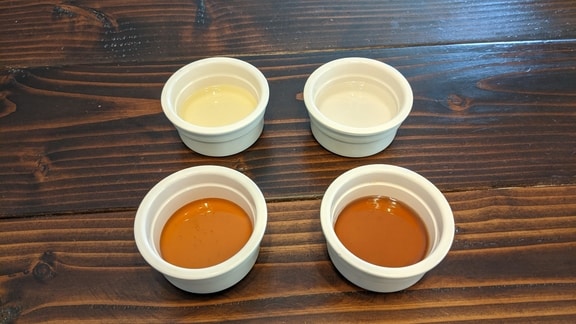
The picture above is vinegar, water, honey, and maple syrup that we’re using in our experiments.
How Does Viscosity Affect Pop Rocks?
This takes us right into our first fun experiment. Ask your kids whether they think the Pop Rocks will be affected by the viscosity of the liquid they are placed in and document your hypotheses and results.
- A variety of liquids (try water, honey, juice, and syrup, or whatever you have on hand)
- Plastic cups
- Baking soda
- Slime (optional)
Liquid Testing
First, you can test out the kids’ theories on viscosity with these steps:
- Fill each cup with one of your liquids and place them on the table.
- Add Pop Rocks to the cups, one at a time.
- Listen to see which cup pops and crackles the loudest.
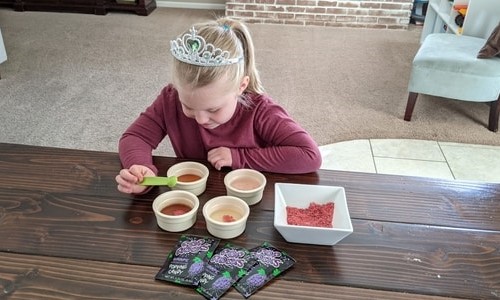
Questions to ask your kids about the Pop Rocks in liquid:
- Which cup has the highest viscosity?
- Which cup has the lowest viscosity?
- What liquid makes the most noise when Pop Rocks are inserted?
- Based on that answer, are Pop Rocks more reactive to high or low viscosity liquids?
Viscosity Race
While you have three of four different liquids to test how viscosity affects pop rocks, it’s a great time for a race!
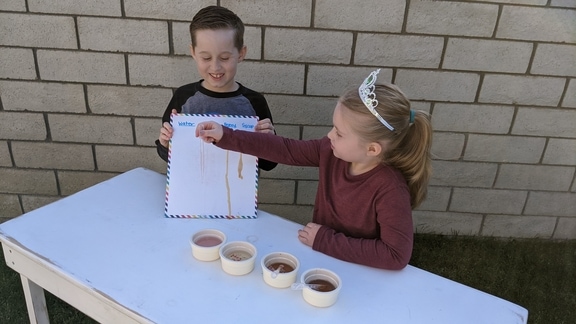
You only need a few things for this experiment along with the liquids.
- White board
- Pipettes (to get the same amount everytime)
- Pin or dry erase marker
You’ll also want to hold the board at the same slope (gradient) to keep it fair. When starting the race use pipettes so that the same volume of liquid is used every time.
My son might have been a little too old for this but he still had fun. He knew right away which liquid was going to fall the fastest. My daughter wasn’t too sure if the maple syrup or honey would get to the bottom of the whiteboard first.
Questions to ask your kids about before the viscosity race:
- Which liquid will be the fastest?
- Which liquid will be the slowest and why?
- What will happen if we warm up the liquids first?
Play around with a few different things like ketchup or mustard.
If these pop-rock experiments get your kids interested in chemistry, then check out our article, Best Chemistry Set for Kids.
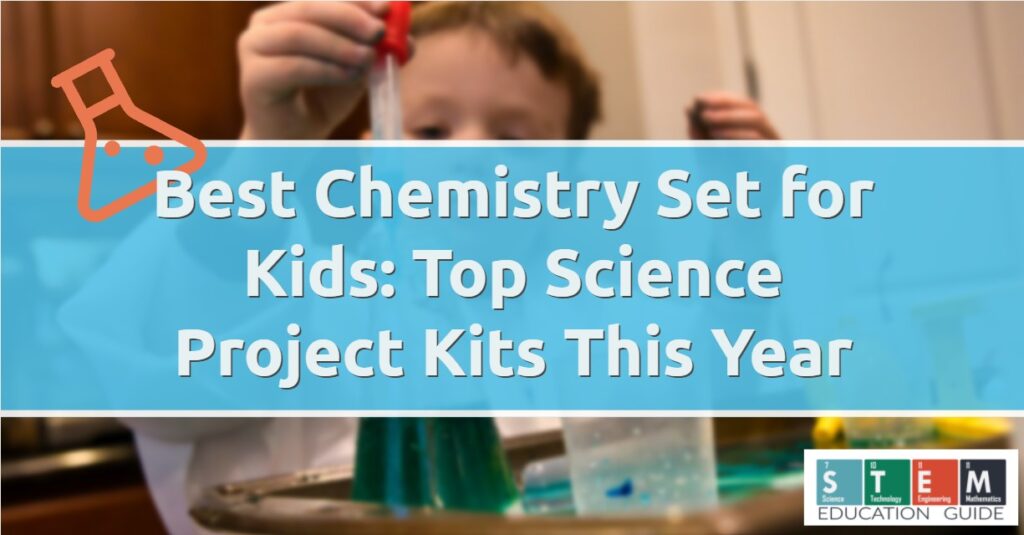
Dough Testing
Now we get to the messy part of the Pop Rocks experiments (assuming you made it through the last part without any little hands knocking over the cups).
Add a small amount of water to baking soda and mix with your hands until it becomes doughy. You can add more water if needed but start with only a small amount—this will not work if it is too wet.
Drop some Pop Rocks in and then add vinegar…and watch what happens!
If you have slime on hand (as most parents do these days), you can try this out with slime too, and compare the reactions.
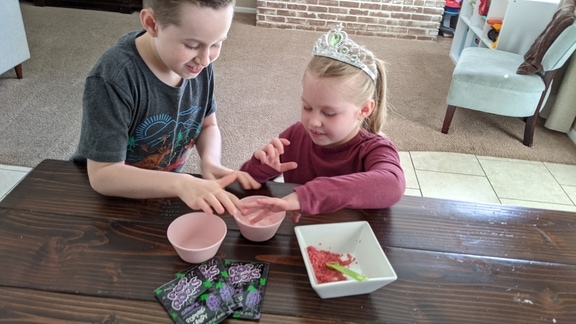
Are you looking for my STEM activities to do with your kids? Then take a look at your article, Microscope Activities for Kids – Fun Experiments Kids Will Love.
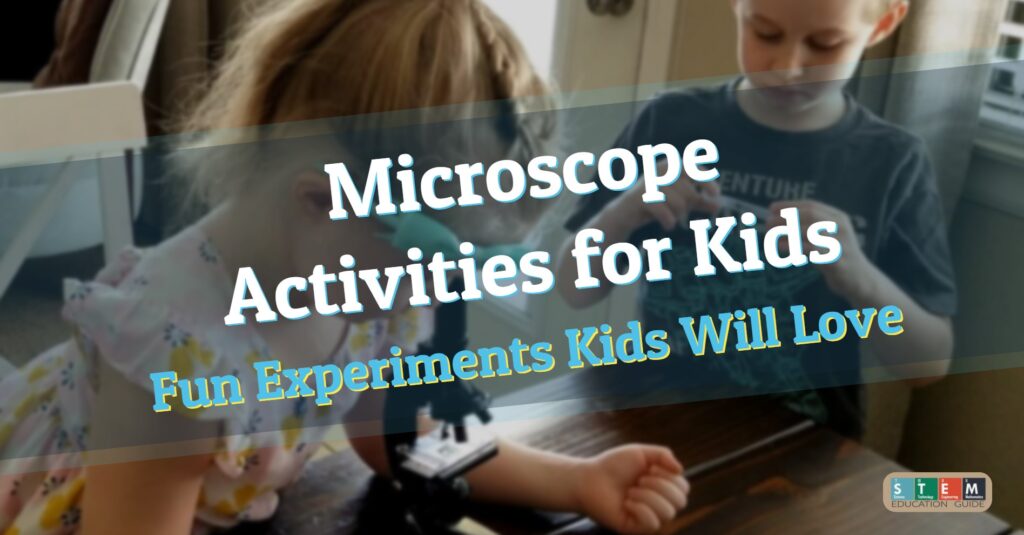
Make it Pop with Soda Pop
Kids will be thrilled to pair their Pop Rocks with a soda science experiment. Keep in mind if you are going to allow “taste testing” during this experiment, so you may want to pick up a caffeine-free soda if you’re doing this science project with young ones.
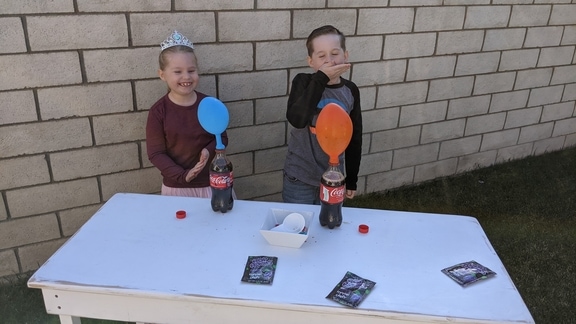
- Three bags of Pop Rocks
- Three bottles of soda (choose different flavors and colors)
- Bag of balloons
- A plastic funnel
Once you have gathered your materials, follow these steps for some fizzy science fun.
- Take a balloon from the bag and give it a good stretch, as you would when prepping to blow it up—but stop after the stretch. You do not need to inflate the balloon.
- Insert your funnel into the mouth of the balloon.
- Pour one of your Pop Rocks packets into the balloon, tapping and twisting it as needed to ensure all the pieces go down into the balloon. (Use a pencil to gently push the pieces in if needed.)
- Remove the funnel and place the mouth of the balloon over an open soda bottle.
- Tip the balloon up so the candy falls into the soda.
- Watch as the snapping, popping, crackling, and inflating of the balloon begins!
With each Pop Rocks science experiment you try, encourage your kids to document their findings. Even while having fun, they can begin to build skills they will use throughout their STEM education.
If you’re looking for a bigger reaction with the balloons, check out our article Fun & Easy Baking Soda and Vinegar Experiments for Kids. Most of these experiments are quick and easy, and not too messy.
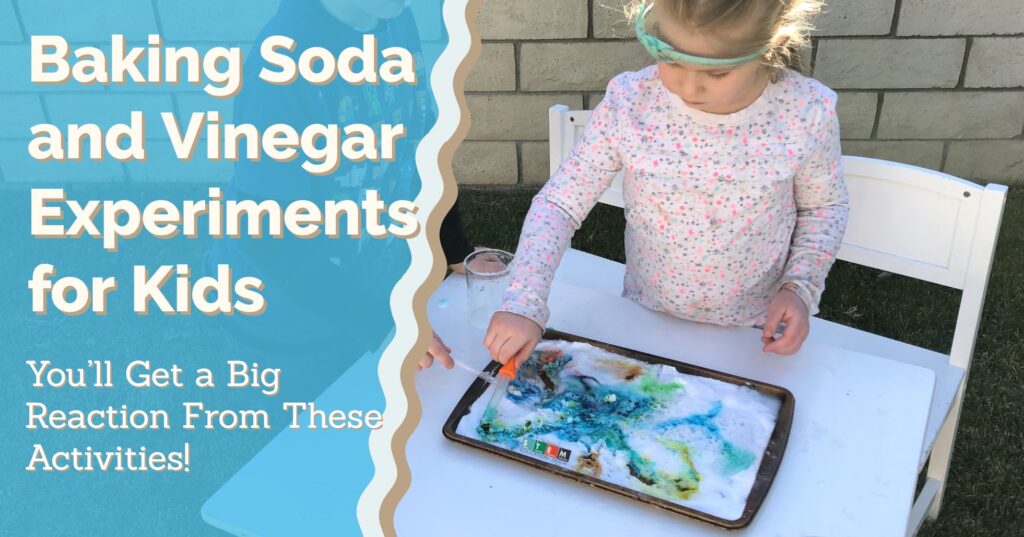
Leave a Comment Cancel reply
Save my name, email, and website in this browser for the next time I comment.
most recent
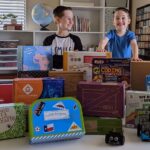
Activities and Games , Toy Gift Guides
Best stem subscription boxes for kids: hands-on reviews.

STEM Holiday Deals , Activities and Games , Science , Toy Gift Guides
How to choose a stem toy for every age kid.
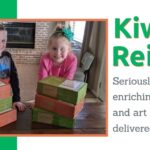
Product Reviews
Kiwico review: everything inside the crates (plus, 30% off coupon code).
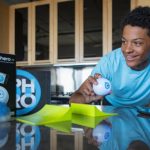
STEM Holiday Deals , Product Reviews
Best black friday deals for sphero.

STEM Holiday Deals
Wonder workshop black friday deals (complete list of where and what to buy).
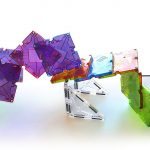
Product Reviews , Toy Gift Guides
Magna-tiles black friday deals: 2024.
STEM Education Guide
[email protected] STEM Education Guide 9125 SVL BOX Victorville, CA 92395
Your Compass for STEM Discovery
© 2024 STEM Education Guide
Get Your ALL ACCESS Shop Pass here →
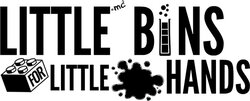
Pop Rocks and Soda Experiment
Pop rocks candy are an awesome experience! A fun candy to eat, and now you can turn it into an easy Pop Rocks science experiment too! What happens when you mix soda with pop rocks? Can pop rocks and soda really make you explode? Take the Pop Rocks and soda challenge with this cool chemistry experiment .
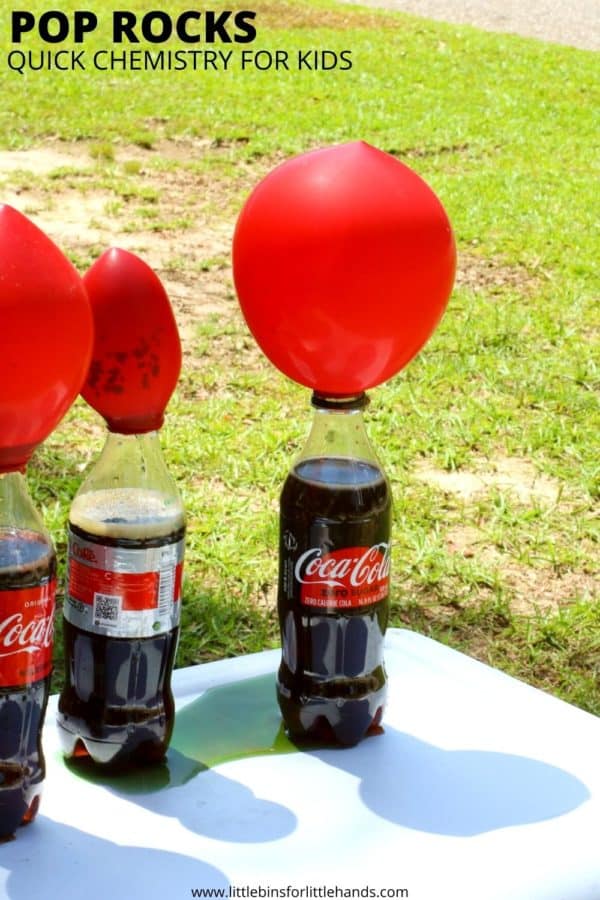
Pop Rocks and Soda
Our Pop Rocks and soda experiment is a fun variation on our baking soda and vinegar reaction . Blow up a balloon using just two basic ingredients, soda and Pop Rocks.
We love fizzing experiments and have been exploring chemistry for kindergarten, preschool, and early elementary for almost 8 years. Make sure to check out our collection of easy science experiments for kids.
Grab a packet of Pop Rocks and some soda and find out what happens when you mix them together!
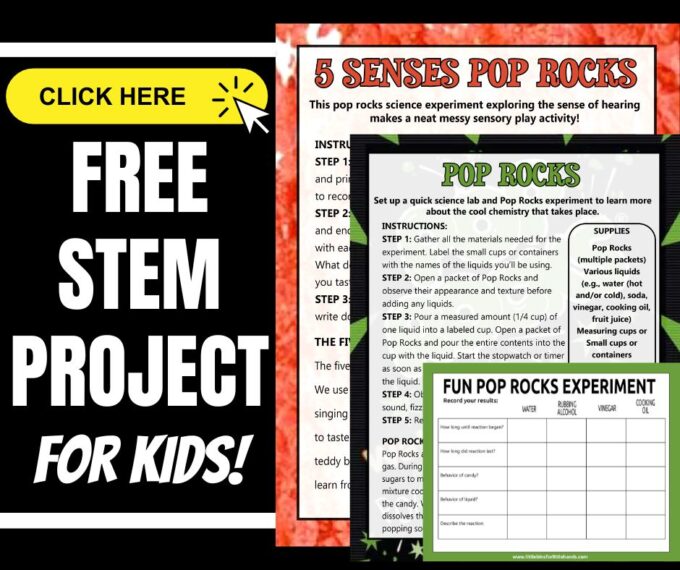
- 3 bags Pop Rocks Candy Variety Pack
- 3 (16.9 to 20-ounce bottles) soda in different varieties
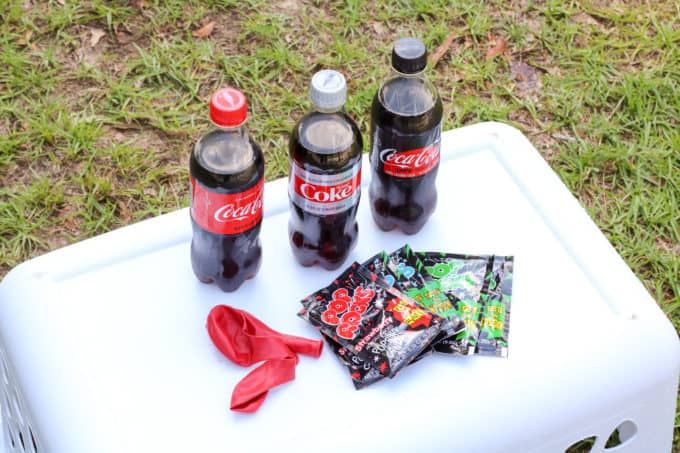
Instructions:
STEP 1. Stretch the balloon with your hands, making an effort to expand the neck of the balloon.
TIP: Avoid blowing into the balloon as the moisture from your mouth will make the candy stick to the inside of the balloon later on.
STEP 2. Place the mouth of the balloon over the small opening of a funnel. Then pour one package of Pop Rocks into the funnel and tap the funnel to force the Pop Rocks down into the balloon.
TIP: If the candy refuses to move through the funnel, try pushing the candy with a bamboo skewer without putting a hole in the balloon.
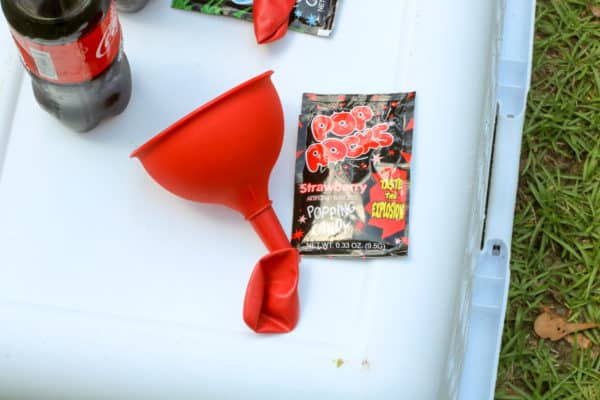
STEP 3. Open the soda and place the opening of the balloon over the top, taking care to have the mouth of the balloon completely over the top of the bottle without dropping the candy into the balloon.

STEP 4. Tip the balloon up and shake slightly (if needed) to transfer the candy into the soda. Watch what happens to the soda and the balloon!
TIP: Make sure to use a level surface so the bottles do not fall over.
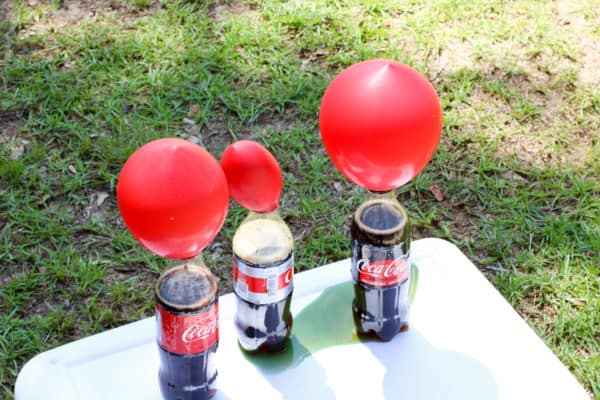
Usually, gas will begin to form immediately. Expect the soda to get fizzy, the candy to crackle, and the balloons to fill with air and foam.
If a balloon fails to expand, examine the experiment to see what happened. Typically this will happen if the balloon is not completely covering the top of the soda bottle.
YOU MAY ALSO LIKE: Baking Soda and Vinegar Balloon Experiment
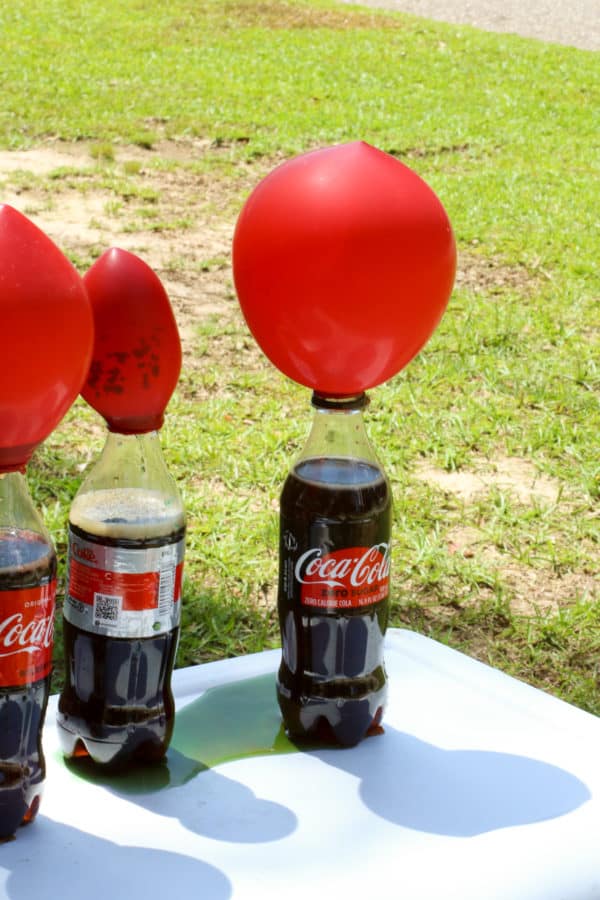
What happens when you mix pop rocks and soda?
Why do Pop Rocks pop in your mouth? As pop rock dissolves, it releases a very small amount of pressurized gas called carbon dioxide, which makes a popping noise!
You can read more about the patented process of Pop Rocks . However, by themselves, there is not enough gas in the candy to inflate a balloon. That’s where the soda helps!
Soda is a carbonated liquid containing lots of pressurized carbon dioxide gas. When the Pop Rocks are dropped into the soda, some of the gas in the soda collects as bubbles on the candy.
Some of this gas then escapes from the water and the corn syrup that holds it, and moves upwards. The gas fills the space at the top of the bottle and then moves up into the balloon. The balloon inflates as the volume of carbon dioxide gas increases.
This is a great example of a physical change , even though it can look like a chemical reaction has taken place.
💡Other experiments that work similarly are coke and Mentos and our dancing corn experiment!
So what happens when you eat and drink Pop Rocks and soda simultaneously? Pop Rocks and soda myth! It won’t make you explode but it might make you release some gas!
Use the scientific method with kids
The scientific method is a process or method of research. A problem is identified, information about the problem is gathered, a hypothesis or question is formulated from the information, and the hypothesis is put to test with an experiment to prove or disprove its validity.
Sounds heavy… What in the world does that mean?!?
The scientific method can simply be used as a guide to help lead the process of discovery. You don’t need to try and solve the world’s biggest science questions! The scientific method is all about studying and learning things right around you.
As kids develop practices that involve creating, gathering data evaluating, analyzing, and communicating, they can apply these critical thinking skills to any situation.
To learn more about the scientific method and how to use it, CLICK HERE .
Even though the scientific method feels like it is just for big kids this method can be used with kids of all ages! Have a casual conversation with younger kiddos or do a more formal notebook entry with older kiddos!
Use our free printable science worksheets below to make the process even easier!
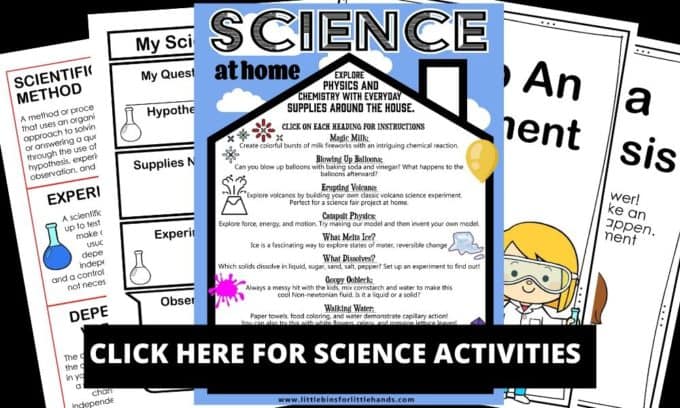
Bonus Pop Rocks Experiments
Here are several ways you can apply the scientific method by changing the independent variable and measuring the dependent variable.
- Use one variety of soda and test different varieties of Pop Rocks to see if each has a similar reaction. Measure the balloons using a tape measure to decide which variety created the most gas.
- Using the same variety of Pop Rocks and test different varieties of soda to see which emits the most gas. (We found Diet Coke tends to win! See our Diet Coke and Mentos Experiment )
Make sure to save some Pop Rocks for another fun experiment exploring viscosity. Test whether Pop Rocks are louder when placed in liquids of different viscosity or thickness. Click here for our viscosity Pop Rocks Experiment !
More Fun Science Experiments
- Diet Coke and Mentos Eruption
- Skittles Experiment
- Drops of Water On A Penny
- Egg In Vinegar Experiment
- Elephant Toothpaste
Printable Science Projects For Kids
If you’re looking to grab all of our printable science projects in one convenient place plus exclusive worksheets and bonuses like a STEAM Project pack, our Science Project Pack is what you need! Over 300+ Pages!
- 90+ classic science activities with journal pages, supply lists, set up and process, and science information. NEW! Activity-specific observation pages!
- Best science practices posters and our original science method process folders for extra alternatives!
- Be a Collector activities pack introduces kids to the world of making collections through the eyes of a scientist. What will they collect first?
- Know the Words Science vocabulary pack includes flashcards, crosswords, and word searches that illuminate keywords in the experiments!
- My science journal writing prompts explore what it means to be a scientist!!
- Bonus STEAM Project Pack: Art meets science with doable projects!
- Bonus Quick Grab Packs for Biology, Earth Science, Chemistry, and Physics
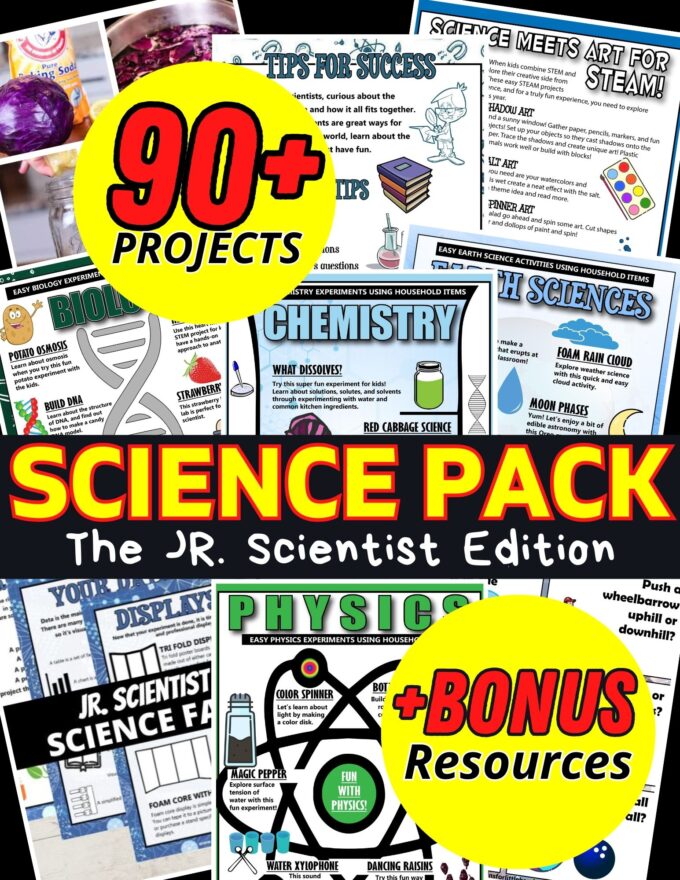
Subscribe to receive a free 5-Day STEM Challenge Guide
~ projects to try now ~.
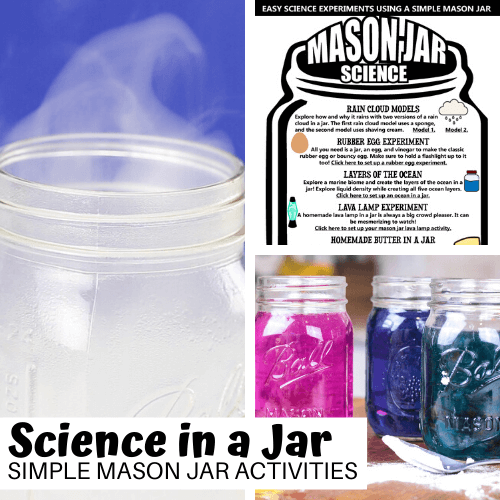
- Skip to main content
- Skip to primary sidebar
Second Grade teachers! Join me Around the 2nd Grade Kampfire on Facebook! JOIN HERE
- Facebook Group
- Search this website
Around the Kampfire
Elementary Teaching Blog
Last updated by Linda Kamp on December 10, 2022 • 4 Comments
Solid, Liquid & Gas: Pop Rocks Science Experiment

This Pop Rocks science experiment is a fun way for students to investigate how combining a solid and liquid forms a gas.
Solid, Liquid, Gas: Pop Rocks Science Experiment
Most kids know the fizz that bubbles up when you pour a glass of soda is carbon dioxide gas called carbonation. What they may not know is how it is made. Carbonation is made by forcing carbon dioxide gas and water into the soda at high pressures. This easy science experiment aligns to Next Generation Science Standards and is perfect for students to explore the properties of gas.
- 12 oz. bottle of soda
- medium sized kitchen funnel
- 8 inch round balloon
- Pop Rocks candy
- student lab sheet

1. Place the balloon over the end of a small kitchen funnel. We stretched the balloons first and even blew them up a little then released the air to stretch them further so the candy would fall in easier.

2. Pour the Pop Rocks candy into the funnel. Tap the funnel until the candy flows into the balloon. Gently shake the balloon so the candy falls to the bottom.

3. Stretch the balloon over the mouth of the soda bottle. Lift the balloon up so the candy pours into the bottle. Listen for the popping sound as the gas releases, rises, and fills the balloon.

Students use the lab sheet in this science unit to collect data by drawing the steps they took and recording observations they made. I ask them to think about the properties of gas, then analyze their data, explain their result, and what caused the balloon ti inflate.

Explain the Pop Rocks Science to Your Students
The science behind the experiment is pretty simple. Each tiny piece of Pop Rocks candy contains a small amount of carbon dioxide gas. When it is dropped into a liquid the candy gets wet releasing tiny gas bubbles that make a popping sound as they burst out of the candy shells.
Carbonated drinks contain a lot of pressurized carbon dioxide. When Pop Rocks are poured into the soda some of the gas in the soda collects as millions of bubbles on the candy. As more gas is released from the candy it moves upward and in to the balloon to fill the space.
Remember, gases fill their container or space. Since the balloon fits tightly around the mouth of the bottle, the gas has nowhere else to go up and into the balloon!
Are you a 2nd grade teacher planning a matter unit soon?
Be sure to check out this complete States & Properties of Matter unit and teaching Power Point because I’ve done all the planning for you!

Click here for States & Properties of Matter
I know your class will enjoy this Pop Rocks science experiment as a fun way to explore combining a solid and liquid to form a gas.

For more science experiments and properties of matter activities visit these posts:

Exploring Solids, Their Properties & Flexibility

Marvelous Matter Activities for 2nd Grade Scientists

Properties of Matter Cracker Lab
Happy teaching and experimenting!
Share this:

Yearlong assessments

Free Grammar Toolkit
Assess all second grade grammar and language standards with this yearlong assessment tool!

You May Also Enjoy These Posts

Reader Interactions
September 23 at 5:34 pm
Hi! Is there a way to purchase the lab sheet only? Thanks!?
September 1 at 9:46 am
It felt unprofessional to show the write up and then only make available when the $14 unit is purchased. Since you show it, it should of been a freebie.
September 12 at 9:41 am
Hi Liz, You are certainly welcome to use the idea I shared.
Leave a Comment Cancel reply
Your email address will not be published. Required fields are marked *
Notify me of new posts by email.
Hello Friends
I’m Linda Kamp, a 20 year primary grade teacher with a passion for creating educational materials that excite students and make learning fun! I'm so glad you're here!

- Skip to main content
- Skip to primary sidebar
Fun with Mama
Toddler and preschool activities
Written by Brenda • Aug 25, 2022 • Leave a Comment
Pop Rocks and Soda Experiment
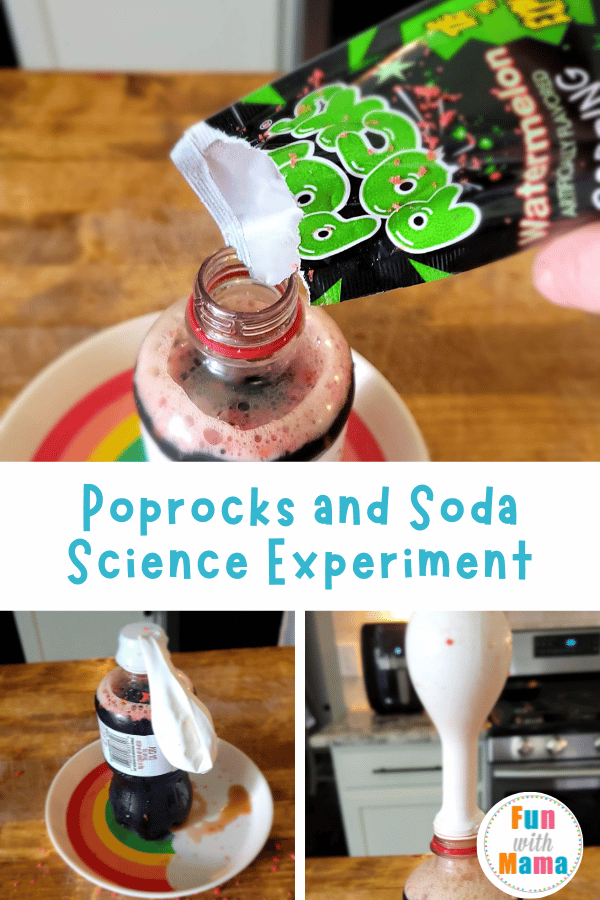
Simple science experiments are tons of fun to do with kids at home or in the classroom. This pop rocks and soda experiment is a fun twist on the classic baking soda volcano experiment. With the power of chemical reactions, children can inflate a balloon using pop rocks!
Speaking of fun science activities, be sure to check out my Exploding Ziploc Bag Science Experiment for Kids as well! Show the kids that science is tons of fun!

The really great thing about making this pop rocks and coke experiment are that the kids will be intrigued and part of the process. It’s no secret that fizzing experiments are some of the best!
If you’re wondering what truly happens when pop rocks are mixed with soda, this science pop rocks experiment will show you!
Supplies need for this pop rocks and soda experiment
You only need a few things to do this experiment! You will need:
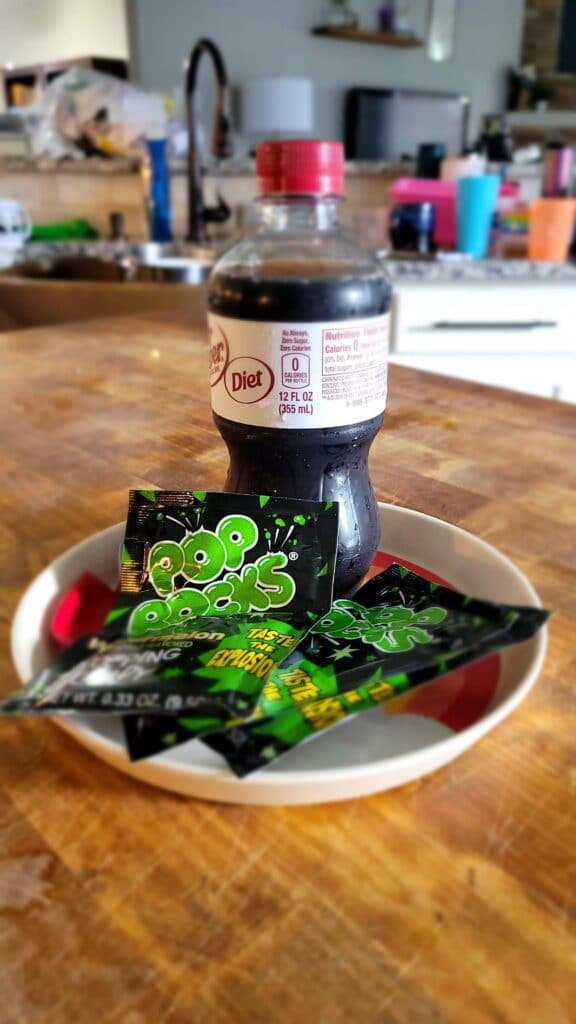
- Diet soda in a plastic bottle
- Regular soda in a plastic bottle
How does the pop rocks and soda experiment work?
Poprocks are a hard candy made of sugar and flavoring. The candies are filled with a small amount of carbon dioxide. When the sugary shell melts, the candies “pop” and release the carbon dioxide gas into the air.
When the pop rocks are dropped into the soda, the soda melts the candies and the carbon dioxide is released. Since soda also contains carbon dioxide, the candy pulls some of the carbon dioxide from the soda into the air, which inflates the balloon.
How much the balloon expands is based on how many pop rocks are added to the balloon, how fresh the soda is, and what type of soda it is.
We found that diet soda created a bigger reaction than regular soda but this is where the kids can create a hypothesis and try different flavors of soda.
How to do the pop rocks and soda experiment
First, open the neck of a balloon as wide as you can with your fingers. Take care not to break the balloon while doing this or you’ll have to throw out the balloon and get a new one.
The balloon must make an airtight seal around the neck of the bottle to work. Because of this, have a few more balloons on hand than you think you will need.
Pour two bags of pop rocks into the balloon. Repeat with a second balloon.
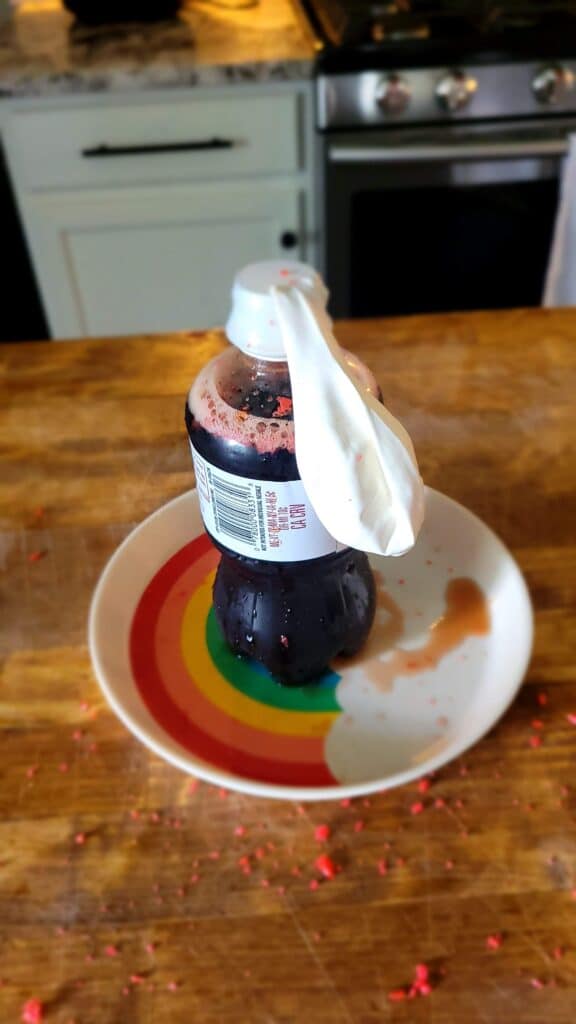
Open the two soda bottles.
While holding the pop rocks inside of the bigger part of the balloon, carefully slide the neck of the balloon over the top of the bottle.
Again, if the balloon rips, you’ll have to start over with a new balloon.
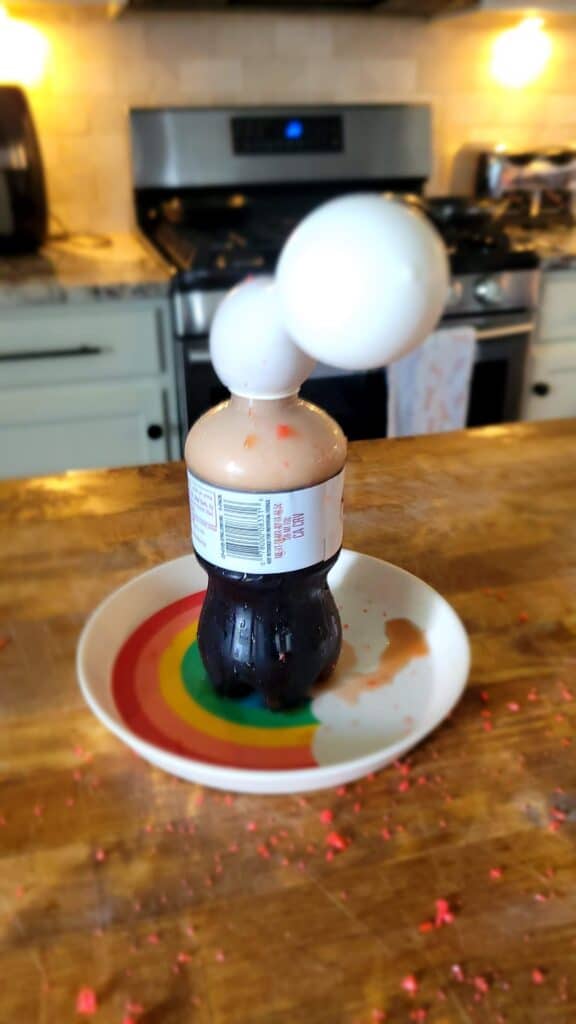
Tip the pop rocks from inside the balloon into the soda. Try to do this at the same time with regular soda and diet soda.
Watch as the balloon expands.
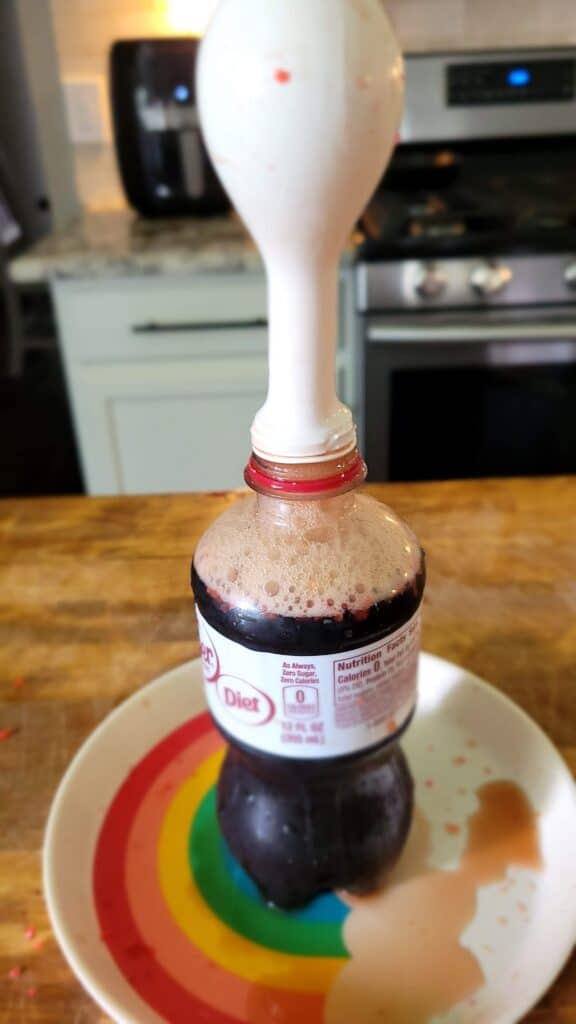
For an even bigger reaction, shake the soda gently to release more carbon dioxide into the balloon.
Follow Up Pop Rocks Experiment Questions for the Kids
- Did the diet soda or regular soda create a bigger reaction (by blowing the balloon up to more)?
- Do you think that changing the type of soda used changed the outcome?
As you can see, STEM experiments and science activities for kids like this one are a great way to help them learn and have fun at the same time.
More Fun Science Activities for Kids
- How To Grow Beans In A Bag – Bean in a Bag Science Experiment for Kids
- Fizzy Egg Dyeing Science Experiment – The Best Way To Dye Easter Eggs
- Homemade Thermometer Science Experiment – Making a DIY STEM Thermometer

Brenda MacArthur is a STEM curriculum writer, STEM author, and STEM accessibility advocate. She founded the site STEAMsational.com in 2012 which offers hands-on STEM activities for kids and STEM lesson plans for teachers.
View all posts from this author
You May Also Enjoy These Posts:
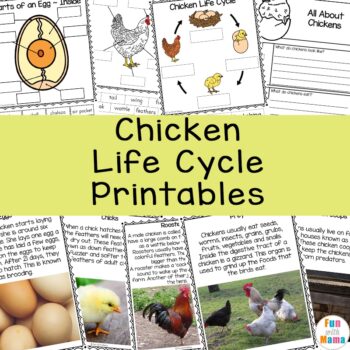
Get easy and instant access to ALL of our printable activities and resources by joining the Fun With Mama printables club.
Get all the details and join here.
Reader Interactions

Leave a Comment Cancel reply
Your email address will not be published. Required fields are marked *
This site uses Akismet to reduce spam. Learn how your comment data is processed .
Have you grabbed the latest FREE printables?
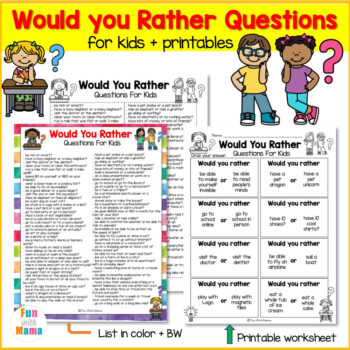

How to Make Homemade Pop Rocks: Free Science Experiment
By: Author Jess Brooks
Posted on Last updated: January 30, 2024
This article may contain affiliate links. Please see our disclosure policy for more details.

Want to know how to make pop rocks? Learn how to create your own and have fun doing it with this pop rocks experiment!
You remember these old pop rock candies, right? They were all the rage when I was a kid. Sometimes you can still find them in grocery stores if you’re lucky. Or you might be able to find them at gas stations.
Did you know you can make homemade pop rocks candy ? Pop rocks experiments are actually a super fun edible STEM activity that kids of all ages can enjoy and the science behind it is surprisingly simple! So read on for how to make pop rocks!
You can skip to the free printable instructions here.
Easy Navigation
Experimenting with Pop Rocks Creation
If you’re a homeschool parent or teacher on the lookout for engaging and educational activities, look no further!
Get ready to ignite their imaginations and witness their eyes sparkle with wonder as we unveil the secret to creating homemade pop rocks candy. Those iconic, effervescent candies that have dazzled taste buds and ignited giggles for generations can now be made right in the comfort of your own home.
Hold on tight, because this experiment is not only a spectacular sensory experience but also a gateway to understanding the magic of chemical reactions and the captivating world of molecular gastronomy. From tiny tots to eager teens, everyone will be bubbling with enthusiasm as they delve into the realms of science and culinary creativity.
The best part? This experiment isn’t just about making fizzy candies – it’s an opportunity for quality family time, bonding over shared discoveries, unleashing your inner mad scientist, and just making homeschooling fun . The kitchen will be filled with laughter and awe as you embark on this journey of exploration and fun.
So gather your little apprentices and put on those safety goggles (metaphorical ones, of course!), because our free homemade pop rocks experiment is about to blow your mind and taste buds in the most delightful way possible. Get ready to create memories that will fizz with excitement as your kids learn how to make pop rocks!
What Are Pop Rocks?
Before we get started, just in case you don’t know about these iconic candies… well then, what are Pop Rocks, anyway?!
Pop Rocks are a unique and iconic candy that’s known for its surprising and fizzy sensation. These tiny, colorful crystals create a popping and crackling sensation in your mouth, delivering a fun and novel experience for candy enthusiasts of all ages.
But have you ever wondered what exactly makes Pop Rocks pop? We’ll discuss that in the homemade Pop Rocks experiment!
Free Printable Homemade Pop Rocks Project Instructions for Kids
Do you want to enjoy this homemade pop rocks project anytime, anywhere? Download the free printable homemade pop rocks project instructions!
Click here to access the Pop Rocks Printable Instructions!

Or keep reading to get all the info on homemade pop rocks.
How to Make Pop Rocks
Follow this simple recipe and you’ll soon be on your way to making your very own DIY pop rocks. Make sure to keep reading to the bottom where you will find tips and tricks, the science behind the pop rocks, and more recommended STEM resources.
Keep in mind, real, homemade pop rocks are made to pop due to a high pressurized method of injecting CO2 into the candies. This is a highly dangerous and actually a patented process.
Your candies will not pop exactly like store-bought pop rocks. However, if done properly (i.e. dry properly, not too much humidity, etc) then yours should still experience a fizzing sensation.
DIY Pop Rocks Ingredients

Here are the Pop Rocks ingredients you need:
- 2 cups of sugar
- 1 teaspoon baking soda
- ¼ cup plus 1 teaspoon citric acid
- ½ cup light corn syrup
- ¼ cup water
- 1 teaspoon flavoring extract (flavor of your choice)
- 1-2 drops food coloring
- Pinch of corn starch
DIY Pop Rocks Instructions
1. Dust baking sheet with cornstarch.
2. In a sauce pan combine sugar, corn syrup, and water. Cook the mixture until it reaches 300 degrees when measured with a candy thermometer or when it is rapidly bubbling for about 1 minute consistently.

3. Remove from heat and add baking soda, ¼ cup citric acid, extract, and food coloring. Stir to combine.
4. Spread on a baking sheet, don’t let it run over the edges. Sprinkle with a spoonful of citric acid.

A note one this – if your mixture does not have the desired consistency, do not fear! The picture you are seeing is of a mixture that was stickier than was ideal – almost like taffy. If that happens to you just shove it in the freezer to cool.
You can use separated chunks in Ziploc baggies or just shove the whole pan in the freezer. After about 6 hours the kids can break it up into perfect little pop rocks as if nothing in the world went wrong.
5. Allow to cool. (This mixture took 6 hours in the freezer.)
6. Break the candy into pieces and put in a ziploc bag. Use a rolling pin or spoon to crush the candy to resemble rock candy.

Tips and Tricks
- Citric acid can be found near the canning supplies.
- For flavoring, you can use kool-aid flavors or liquid flavors. Kool-aid flavoring will be more sour tasting than sweet.
How Do Pop Rocks Work?
Wondering what causes the Pop Rock to fizz? The quick answer is – injected carbon dioxide.
When making your homemade pop rocks, the ingredients (sugar, corn syrup, flavors, etc.) are heated together and brought to a boil. While doing so, the mixture is mixed with carbon dioxide and as the candy cools the carbon dioxide gets stuck in the candy.
The carbon dioxide bubble is what makes the crackling sound and fizzy feeling when in your mouth. Your own private pockets of carbonation.
Keep in mind store bought pop rocks will give off a much more intense popping sensation than your homemade ones will. This is due to the fact that store bought pop rocks go through a patented and highly dangerous process.
To make your pop rocks just like the store-bought pop rocks, you would need a pressure cooker capable of injecting CO2 into molten candy at 600 psi which is extremely dangerous. Go learn more about store-bought pop rocks here .
The Science Behind the Pop Rocks
Do you know what makes pop rocks pop ?
While your homemade pop rocks will not pop the same way as store bought pop rocks, if done properly, they should still allow for a fun, fizzing sensation. For optimal results, make sure you make these on a day that is not too humid and leave them to dry in an area that is not humid.
The pop rock fizzes and pops you feel are actually those little tiny bubbles of trapped carbon dioxide escaping. It’s a fun feeling, isn’t it? The combination of the heat along with the friction and movement caused by the stirring and the boiling cause those bubbles to get stuck in the first place.
While the same thing does not happen in nature exactly, you can discuss with your kids how ice, including glaciers, also have little pockets of air that get stuck. While these air pockets do not fizz and pop, they do cause the ice to be a cloudy instead of clear like the water that first got frozen was. Fun huh?
STEM Resources Delivered to Your Inbox Every Month

If you liked this edible STEM activity, you are going to love the STEM Made Easy Digital Subscription . Each month, you’ll receive 5 fully-planned STEM project guides along with worksheets and instructions for how to make them fun and engaging for kids ages 3-19. Check it out now !
More Recommended STEM Resources
Edible Science Experiments STEAM-Based Homeschooling STEM Curriculum
- Recent Posts
- ABCmouse Review: Activities, Pricing, Pros and Cons - September 27, 2024
- 15 Fun Math Board Games That Help Develop Math Skills - September 20, 2024
- The 5 Best Online Drawing Classes for Kids - September 5, 2024
Monday 3rd of October 2022
LOVE THIS! We will be featuring you starting Wednesday at the Creative Crafts Linky Party! Creatively, Beth
Shape the Future of ACS! We want your feedback about the ACS brand and how we can serve you better into the future. Take the Survey!
- You are here:
- American Chemical Society
- Students & Educators
- Celebrating Chemistry
- NCW 2021 Celebrating Chemistry
Activity – Chemistry Goes Pop!
By Gina Malczewski and David S. Heroux
Safety Suggestions
- Ask an adult for permission to do the activity and for help when necessary.
- Read all directions and safety recommendations before starting the activity.
- Wear appropriate personal protective equipment (safety glasses, at a minimum), including during preparation and clean up.
- Tie back long hair and secure loose clothing, such as long sleeves and drawstrings.
- Do not eat or drink food when conducting this activity.
- Clean up and dispose of materials properly when you are finished with the activity.
- Thoroughly wash hands after conducting the activity.
- Caution: hot liquids!
- Do not eat or drink any of the materials used in this activity.
- Don’t use extremely hot or extremely cold water.
Disposal: All solutions used in this experiment can be disposed of down the drain with running water. Unused Pop Rocks ® candy can be disposed of in the trash.
Introduction of activity
Pop Rocks ® is a very special brand of candy — first sold back in 1961! The sugary goodness of the candy coats little pockets of gas that are under pressure. That gas is released when you put the candy in your wet, warm mouth, and the sugar dissolves, allowing you to “taste the explosion!”
You can do an easy experiment with a package of Pop Rocks ® to look at the ways temperature affects this process. This experiment also demonstrates how you, as a chemist, can use different ways to measure reactions. In this activity, you can use your eyes, ears, and nose to study how quickly the gas escapes the candy.
- 2 packs of Pop Rocks ® candy, 0.33 oz (9.4 g) each
- 4 dry bowls or cups of similar size
- Two ½-cup (about 120 mL) measuring cups
- Cold and hot tap water
- Divide one pack of Pop Rocks ® candy equally into two bowls that are at least 12 inches (30 cm) apart.
- Pour ½ cup (120 mL) of cold water into one cup, and ½ cup of hot water into the other.
- Quickly, and at the same time, pour the water over the Pop Rocks ® in the two bowls.
- Record your observations for each bowl.
- After the bubbling slows down, stir each with the spoon and observe what happens.
- Seeing, smelling, and listening are all ways to observe what is happening. If you haven’t already done so, try the experiment again with your eyes closed! Focus on what you hear and smell. Be sure to record your observations.
Observations
How does it work.
Pop Rocks ® are sugar candies with tiny pressurized bubbles inside them filled with carbon dioxide gas. When you place Pop Rocks ® in water, the sugar coating dissolves in water, and the gas and pressure are released. This also makes a popping noise, and leaves behind the sugar molecules.
You might think that a chemical reaction is happening, but this activity investigates a physical change, which is when molecules move around, but no new substance is formed. The sugar is dissolved in the water, but it is still sugar. You could find the sugar again if you carefully evaporated the water. Melting, freezing, and boiling are also physical changes.
Sugar crystals are made of many individual sugar molecules . Normally, sugar dissolves in water, because the water molecules interact with the individual sugar molecules and make them dissolve. Over time, the crystals seem to disappear, because they become too small to see. However, they are still there in a different form. Hot water has faster-moving molecules and causes the reaction to happen more quickly than cold water would.
Gina Malczewski, Ph.D. is a retired biochemist who worked at Dow Corning Corporation in Midland, Michigan. David S. Heroux, Ph.D. is a Professor of Chemistry at Saint Michael’s College in Vermont, in Colchester, VT.
Pop Rocks ® is a registered trademark of Zeta Espacial S.A. ACS is not affiliated with Zeta Espacial S.A.
In this Issue
Fast or Slow ... Chemistry Makes It Go! Enzymes: Moving at the Speed of Life Activity – Slowing Apple Browning Need Clean Air, Quick? Catalytic Converters to the Rescue! That's One Fast Reaction! Meg A. Mole Interview with Dr. Francisco Zaera Activity – Slow the Glow Dynamite and the Ethics of its Many Uses Activity – Fizz Race
Accept & Close The ACS takes your privacy seriously as it relates to cookies. We use cookies to remember users, better understand ways to serve them, improve our value proposition, and optimize their experience. Learn more about managing your cookies at Cookies Policy .
1155 Sixteenth Street, NW, Washington, DC 20036, USA | service@acs.org | 1-800-333-9511 (US and Canada) | 614-447-3776 (outside North America)
- Terms of Use
- Accessibility
Copyright © 2024 American Chemical Society

IMAGES
VIDEO
COMMENTS
Doing a science experiment with Pop Rocks can be both fun and educational. Kids love experimenting with candy. Alternatively, you can check out our Pop Rocks and Soda Experiment. Title: Investigating the Effects of Liquids on Pop Rocks. Objective: To observe and compare the reaction of Pop Rocks when placed in different liquids.
Pop Rocks Experiment. Kids love doing simple science experiments that wow and amaze. This pop rocks experiment will get kids excited to learn about science. This pop rocks science experiment is fun for preschoolers, kindergartners, and elementary age students in grade 1, grade 2, grade 3, and grade 4 students to learn about solid liquid gas experiment.All you need for this pop rocks and soda ...
Print this Experiment. Search Experiment Library: ... How are Pop Rocks made? According to information from the manufacturer, Pop Rocks Inc, the candy starts out like any other hard candy by combining sugar, lactose (milk sugar), corn syrup, and flavoring. These ingredients are heated to the boiling point and the hot sugar mixture is mixed with ...
If these pop-rock experiments get your kids interested in chemistry, then check out our article, Best Chemistry Set for Kids. Dough Testing. Now we get to the messy part of the Pop Rocks experiments (assuming you made it through the last part without any little hands knocking over the cups).
Pop Rocks and Soda. Our Pop Rocks and soda experiment is a fun variation on our baking soda and vinegar reaction.Blow up a balloon using just two basic ingredients, soda and Pop Rocks. We love fizzing experiments and have been exploring chemistry for kindergarten, preschool, and early elementary for almost 8 years. Make sure to check out our collection of easy science experiments for kids.
This Pop Rocks science experiment is a fun way for students to investigate how combining a solid and liquid forms a gas. Solid, Liquid, Gas: Pop Rocks Science Experiment. Most kids know the fizz that bubbles up when you pour a glass of soda is carbon dioxide gas called carbonation. What they may not know is how it is made.
This pop rocks and soda experiment is a fun twist on the classic baking soda volcano experiment. With the power of chemical reactions, children can inflate a balloon using pop rocks! Speaking of fun science activities, be sure to check out my Exploding Ziploc Bag Science Experiment for Kids as well! Show the kids that science is tons of fun!
Pop rocks experiments are actually a super fun edible STEM activity that kids of all ages can enjoy and the science behind it is surprisingly simple! So read on for how to make pop rocks! You can skip to the free printable instructions here.
Disposal: All solutions used in this experiment can be disposed of down the drain with running water. Unused Pop Rocks ® candy can be disposed of in the trash. Introduction of activity. Pop Rocks ® is a very special brand of candy — first sold back in 1961! The sugary goodness of the candy coats little pockets of gas that are under pressure.
The Soda and Pop Rocks Easy Science Experiment for Kids uses candy and pop to engage, excite and teach at the same time. Kids will love this experiment for its explosive chemical reaction. No matter what time of year it is, cool and easy science experiments for kids deliver. So go ahead and harness that explosive energy with an explosion of ...